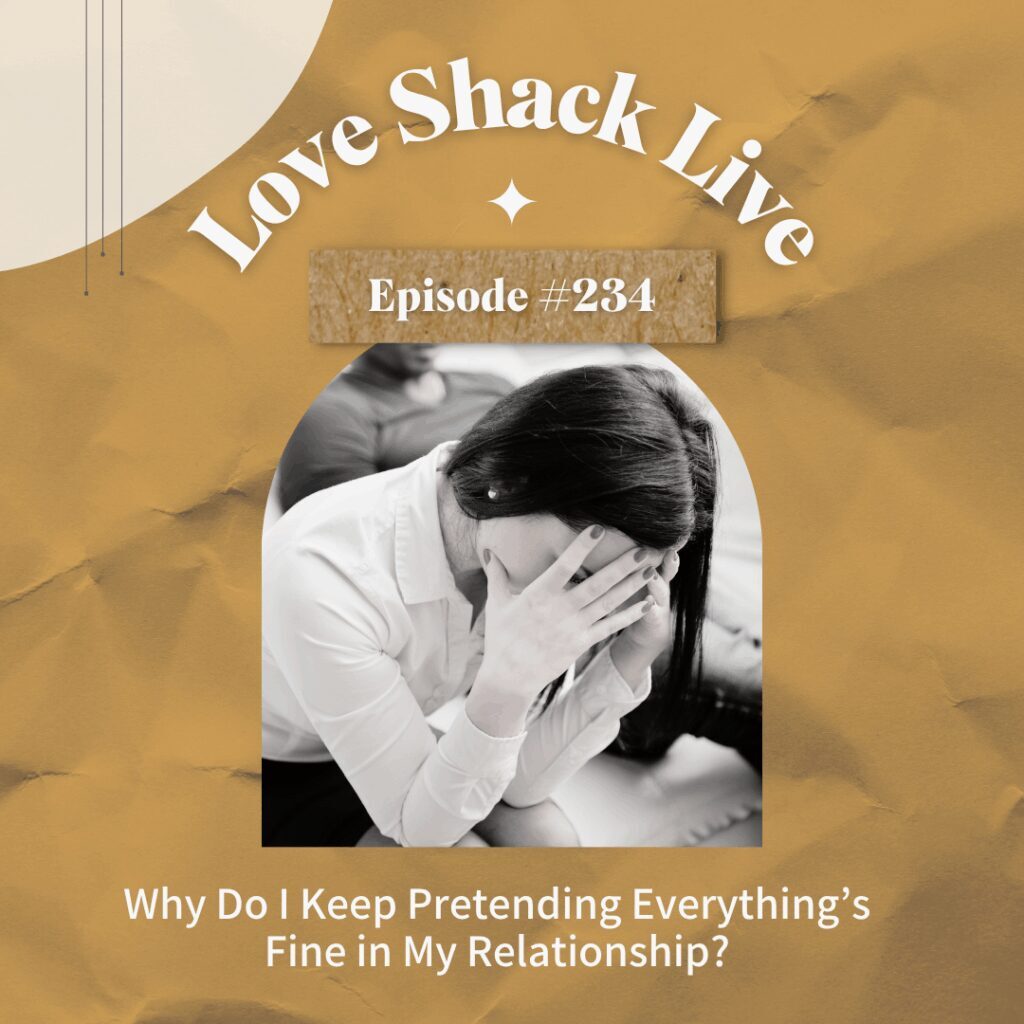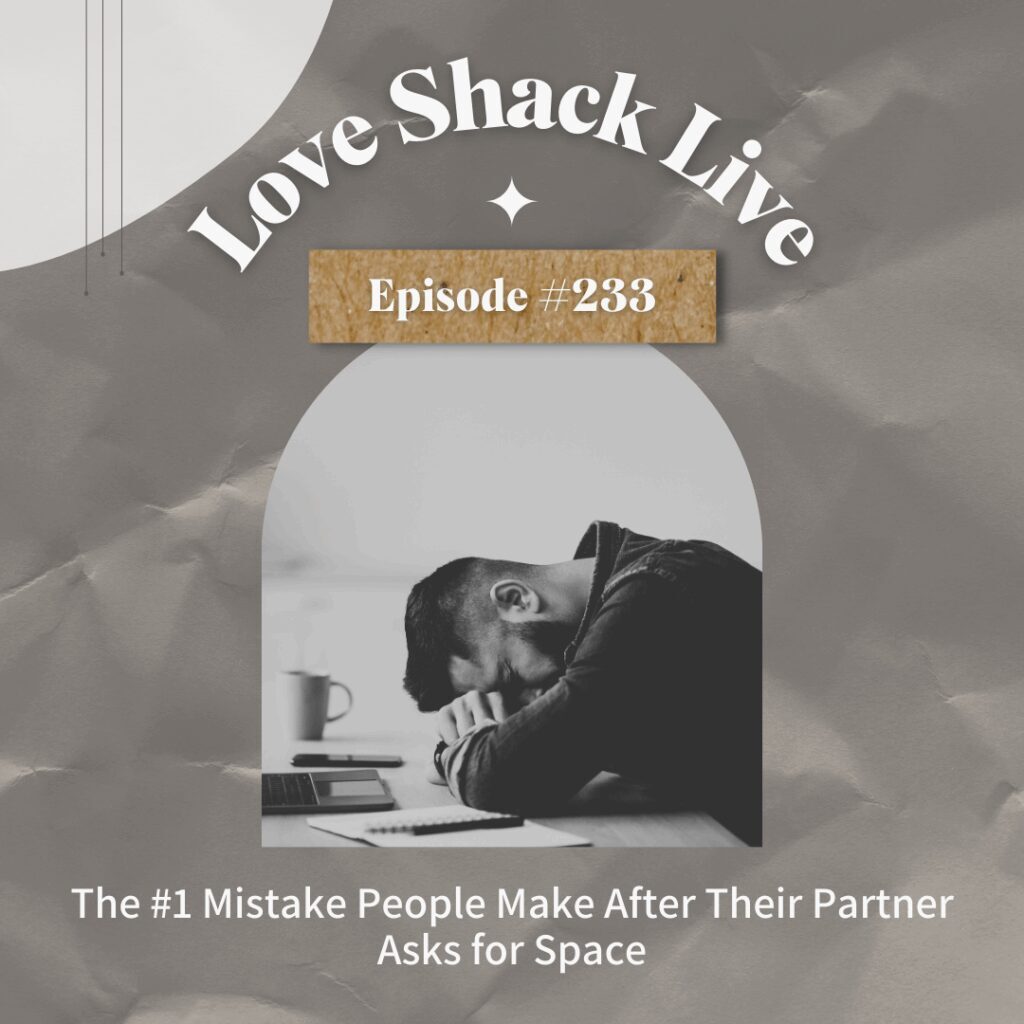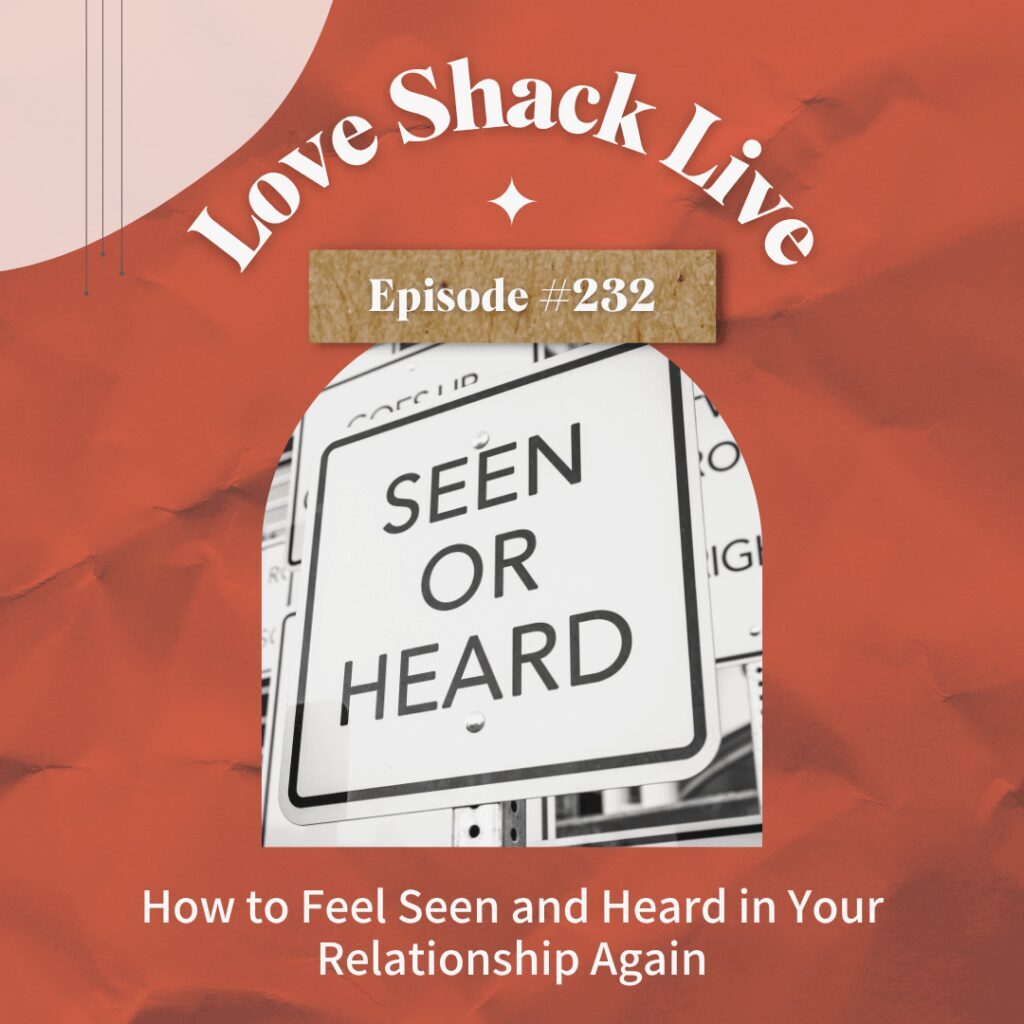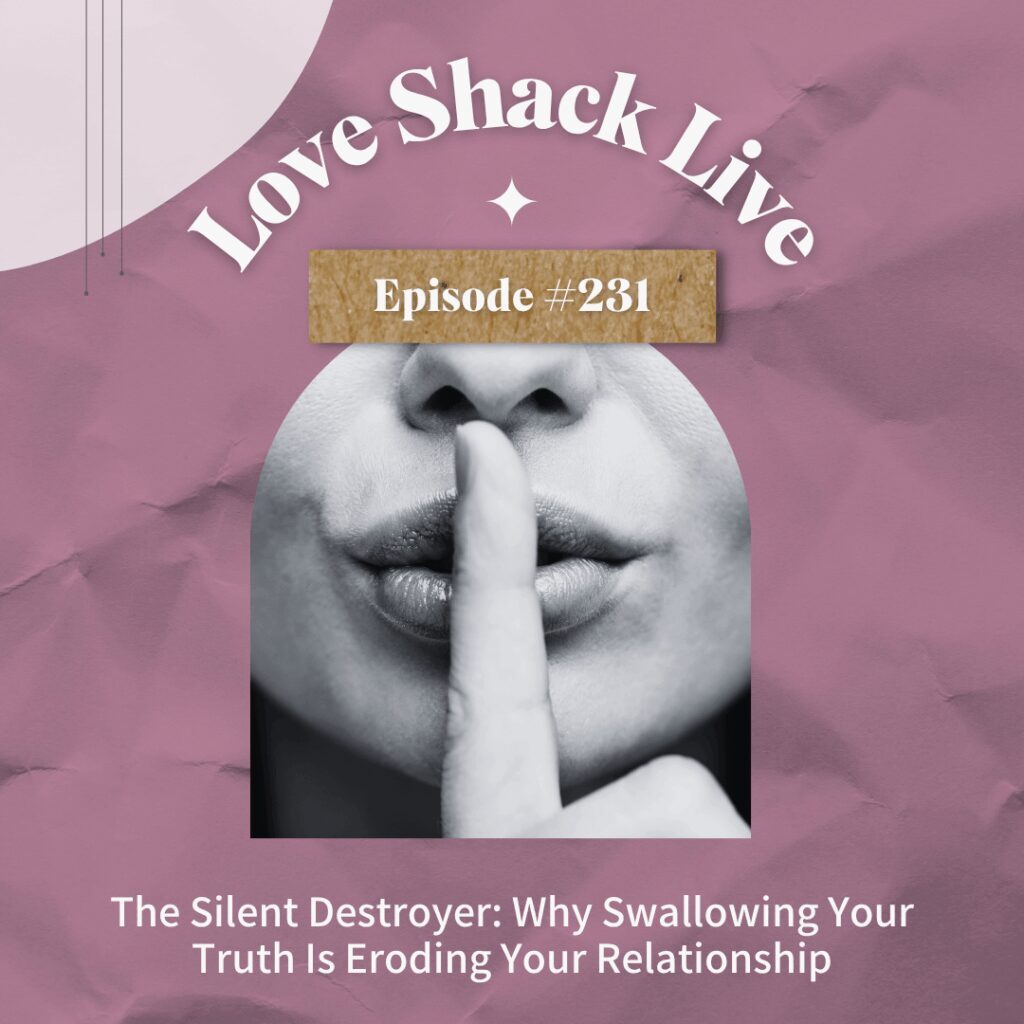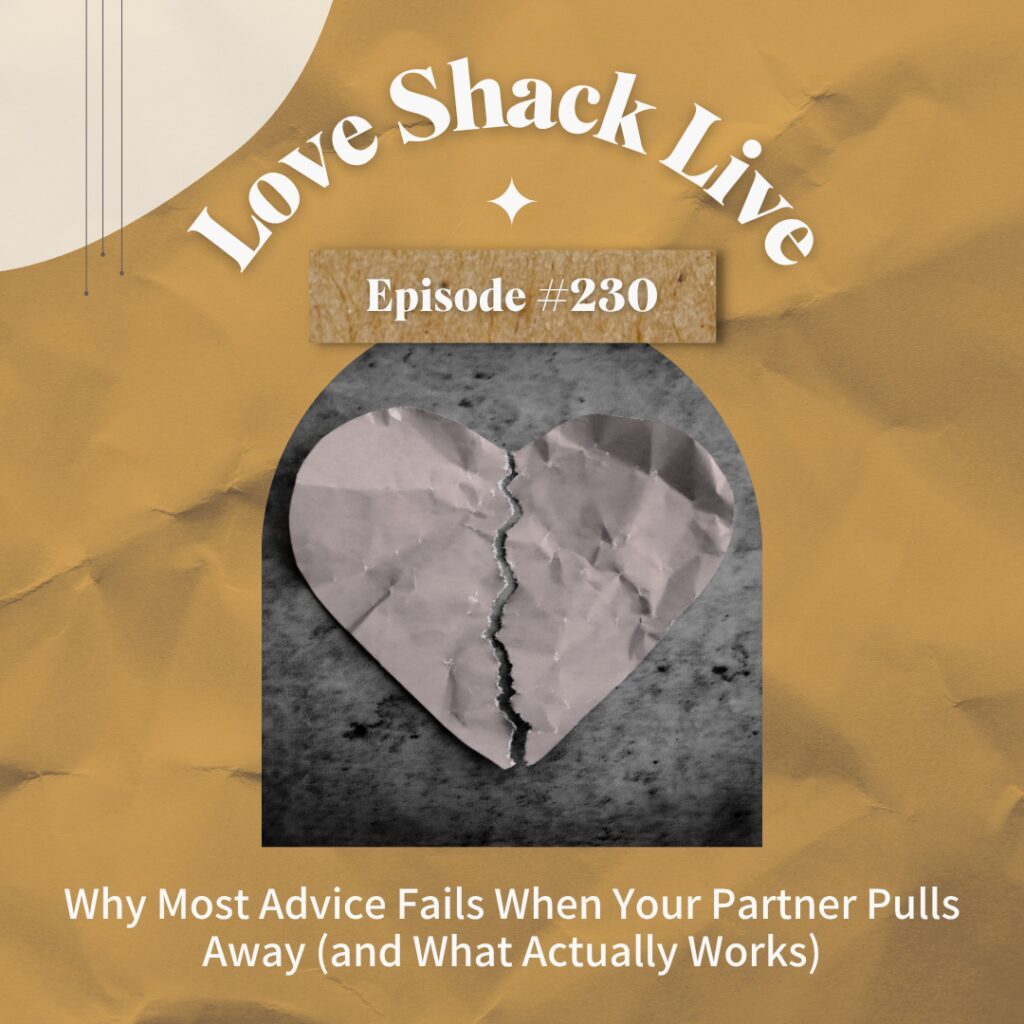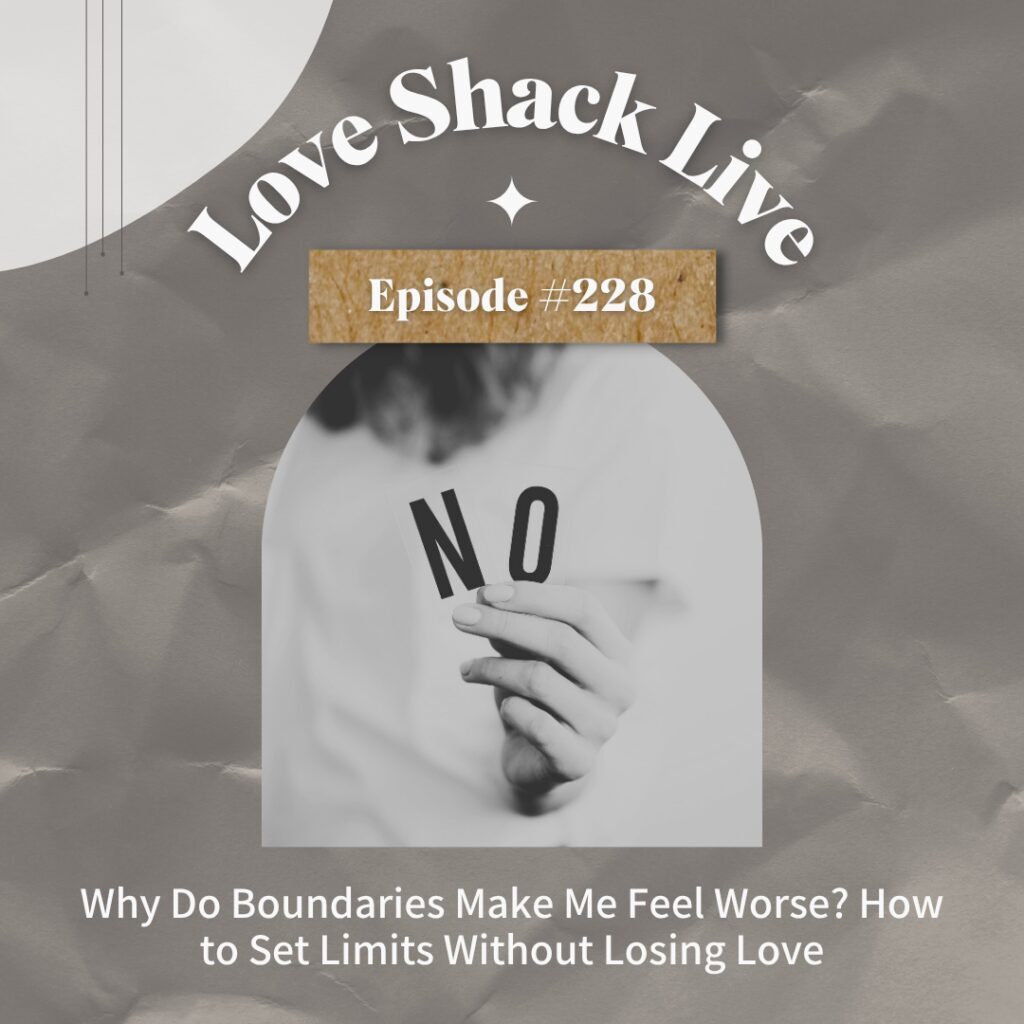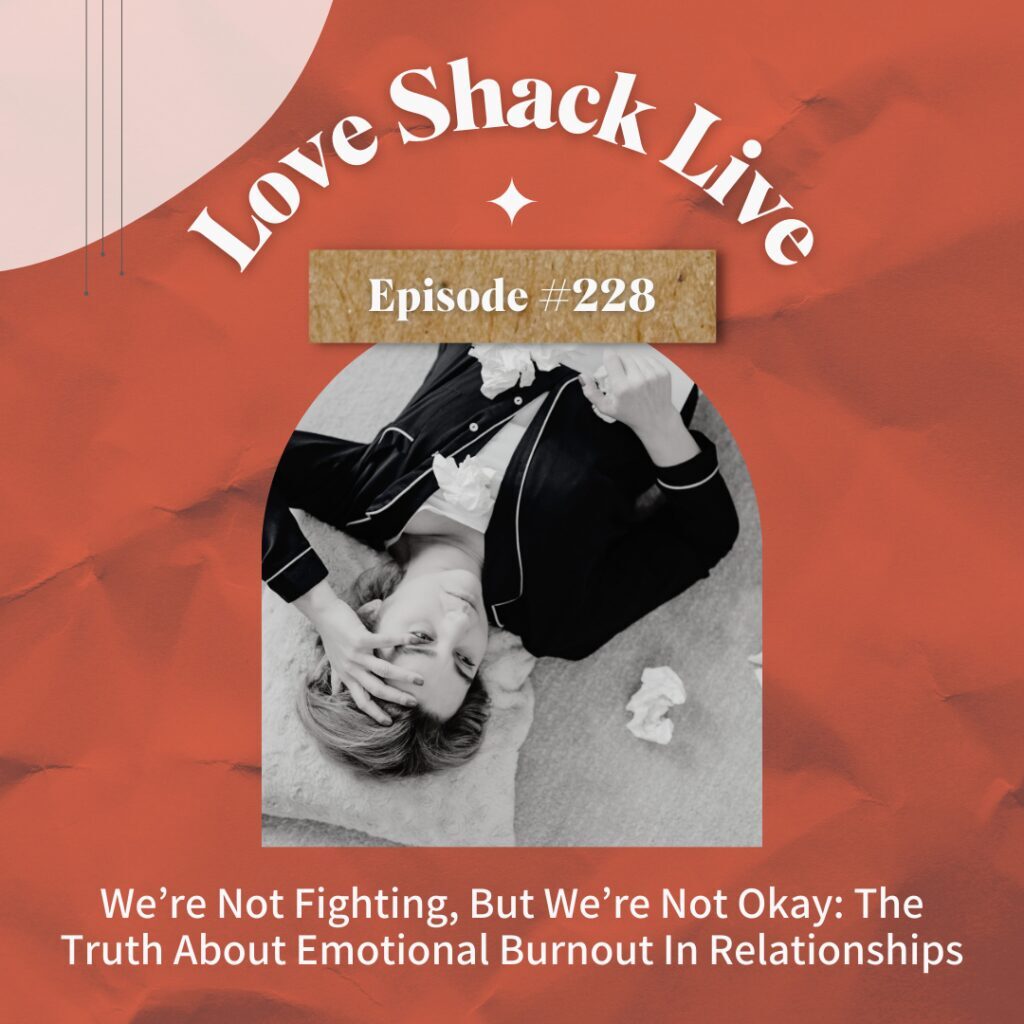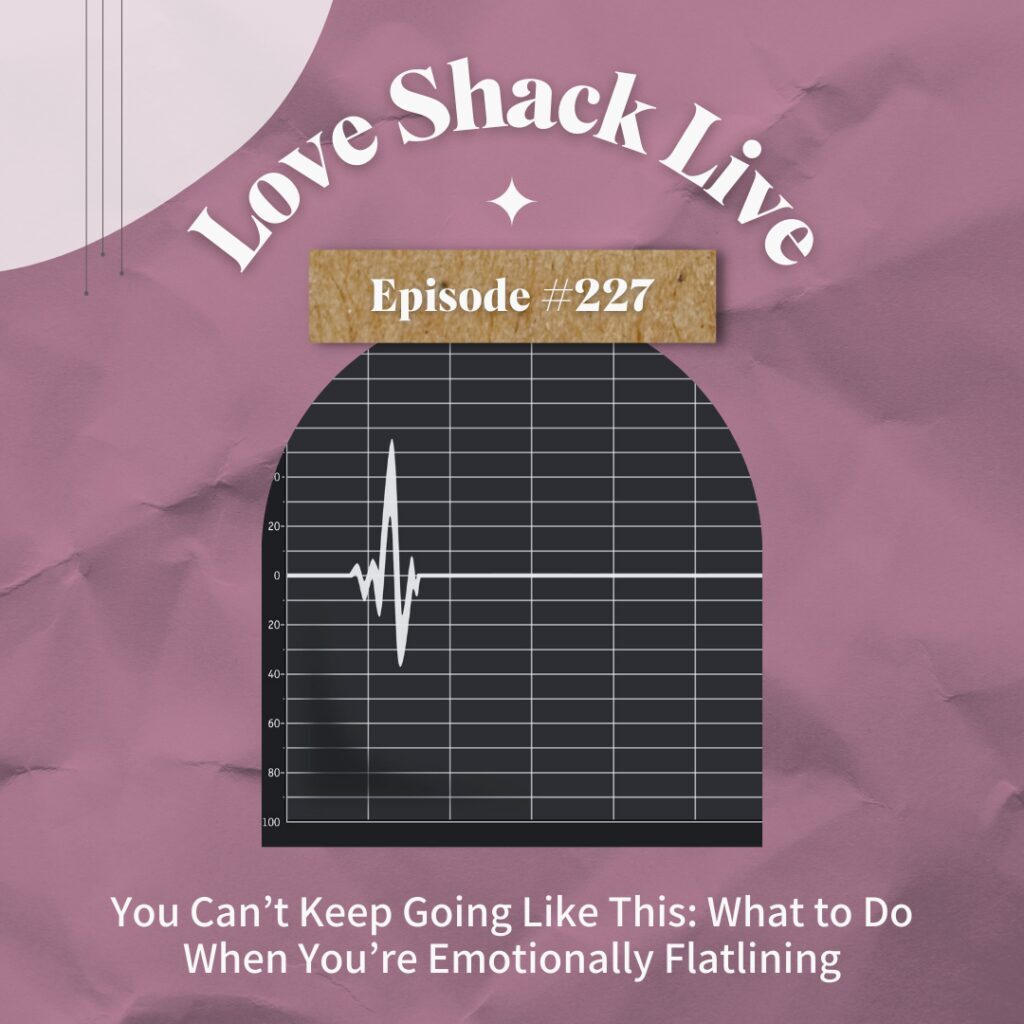#229: Why Do Boundaries Make Me Feel Worse? How to Set Limits Without Losing Love
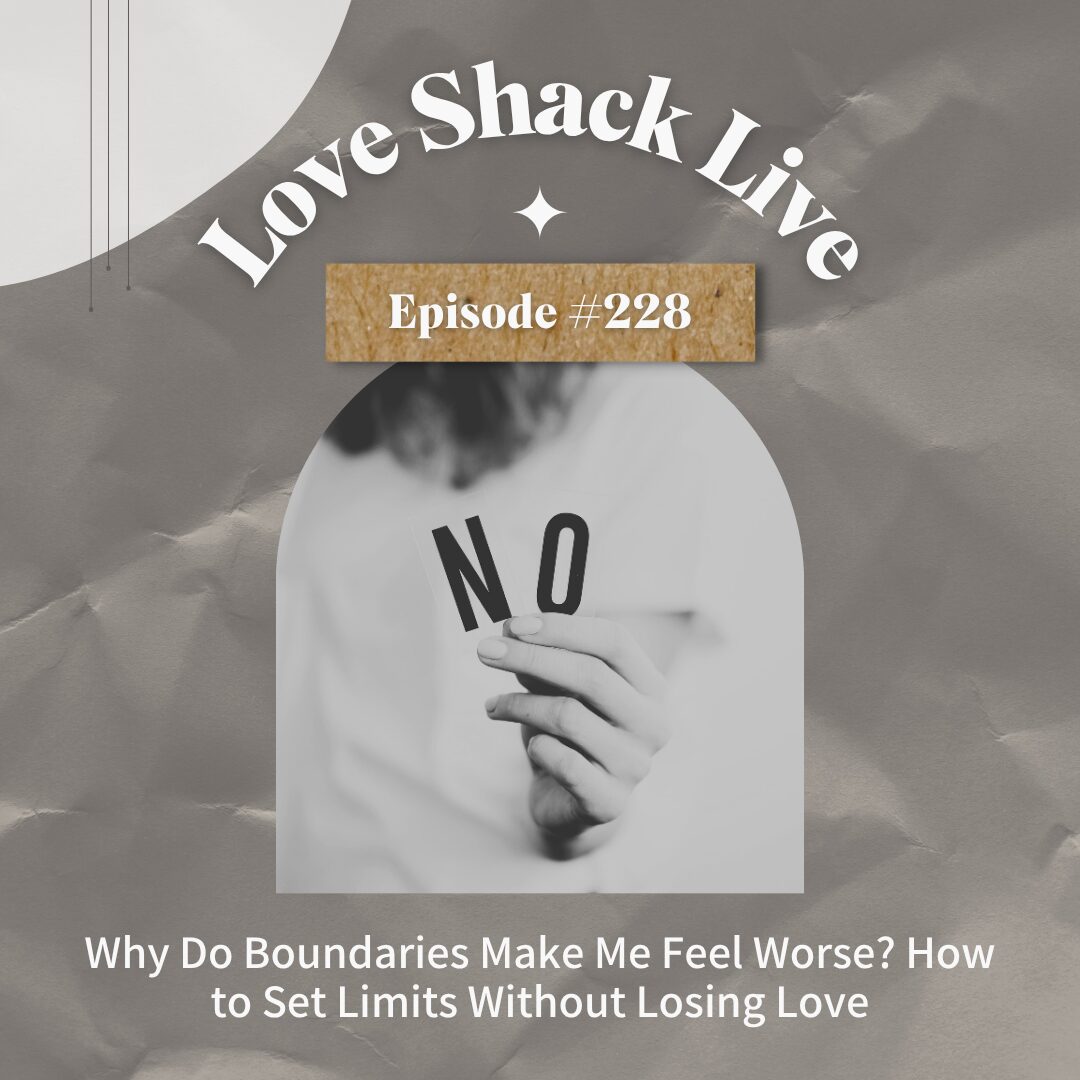
“The moment you say no, the room changes.”
Here’s a punch to start: In one major study, over 60% of couples said that setting boundaries actually made them feel more misunderstood or disconnected, not less.
Let’s be honest. Most of us have tried to set boundaries, only to end up feeling guilty, confused, or completely alone. Maybe you finally said no, and suddenly you were the villain. Maybe you tried to pull away for clarity, and everything just got messier. Or maybe you were on the other side, a partner’s boundary felt like rejection, not respect.
Here’s what nobody tells you: We weren’t taught to create boundaries that heal. We were taught to use boundaries as walls, ultimatums, even as silent punishments. We turn them into shields, protecting ourselves from being hurt, sure, but also from ever being fully known or understood.
That’s not what boundaries are for.
Real boundaries aren’t about control. They’re about clarity. Not about power, but about honest disclosure. At their best? Boundaries are a radical act of love, for yourself and for others.
The Co-Creation Reality: Why Your Boundaries Matter More Than You Think
Let’s get clear: Relationships are chemistry, not math. Every connection is a co-creation, a little bit of me, a little bit of you, mixing to make “us.” What I bring shapes you, and what you bring shapes me, whether we see it or not.
We notice the physical boundaries, don’t we? If someone steps on your foot in line, you say, “Hey, would you mind?” No guilt, no drama. But emotionally? People can stand on your toes for years, and you say nothing. You carry the pain in silence. Why do we let that happen?
Physical boundaries are easy to see. Emotional ones are invisible, shifting, and just as real. Ignore them long enough, and even the strongest relationships crumble, sometimes in spectacular, Mount St. Helens style. I’ve seen it, and maybe you have too.
Compassionate Cruelty: The Silent Saboteur
Most of us think we’re being kind by keeping quiet about our needs. But that’s a kind of “compassionate cruelty.”
We hide our hurt to avoid drama. We say yes when we mean no, telling ourselves we’re keeping the peace. In reality, we’re planting seeds of resentment, both for ourselves and for our partner.
Here’s a hard truth: If you never speak up, you leave your partner guessing. They carry the entire load, never knowing what’s wrong, always missing the moving target. Over time, this doesn’t create intimacy. It creates a ghost of the relationship you once had. You’re together, but alone.
Let’s flip the script. Let’s make boundaries a tool for honesty, not distance.
The Separation Survival Kit
Feeling lost after your partner asked for space? The Separation Survival Kit has everything you need to regain your footing. Packed with practical tips and guided exercises, it’s designed to help you navigate the uncertainty and make empowered decisions—without the spiral of overthinking.
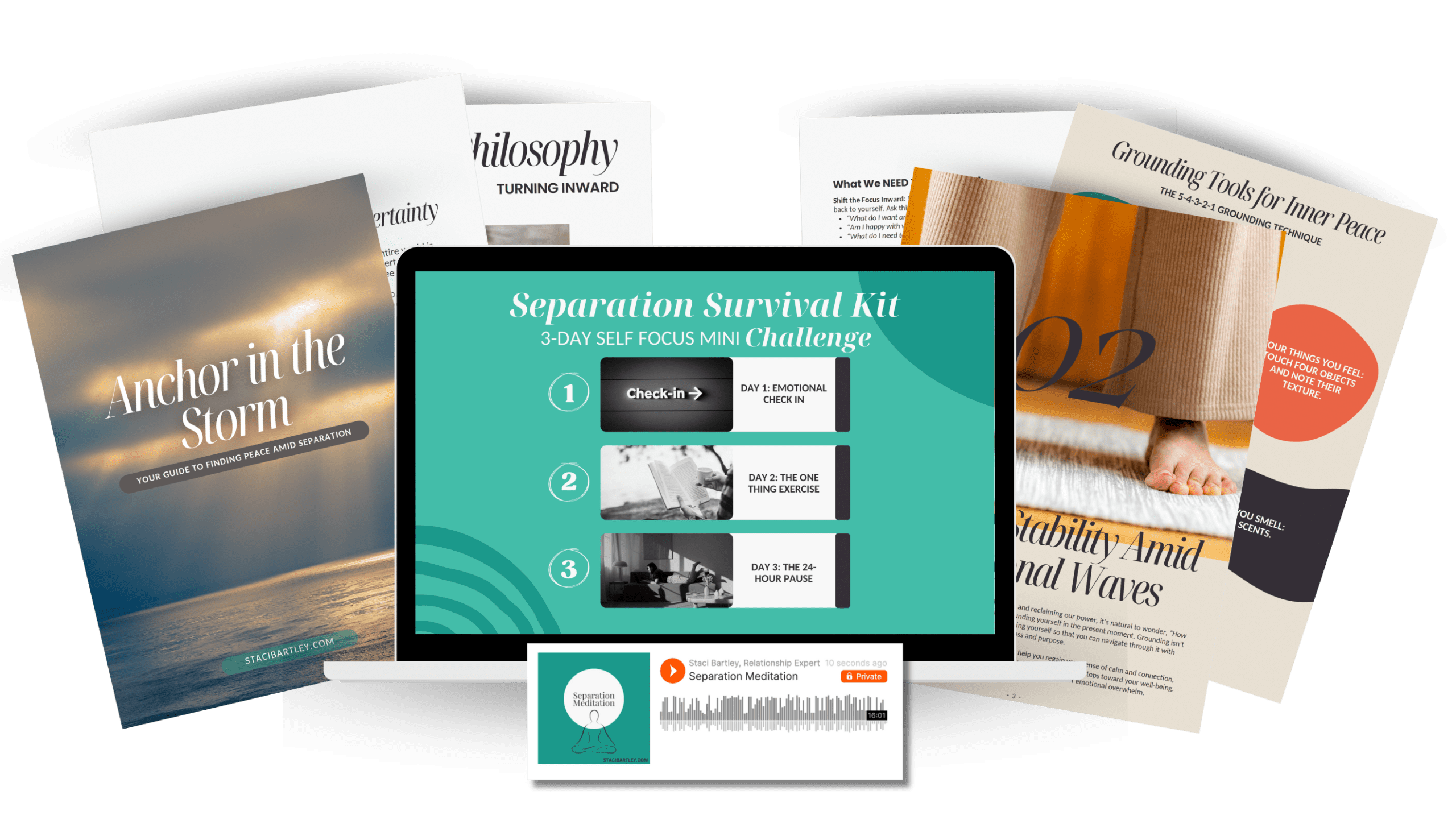
The Real Difference: Boundaries vs. Barriers
A true boundary is simple: The awareness and disclosure of where I end and you begin.
When you set a boundary and communicate it, you’re not building a wall, you’re opening a garage door. Sometimes it’s wide open. Sometimes you need it halfway down. It’s flexible, because you are flexible. Life changes. Your needs shift. That’s healthy.
But when boundaries become rigid rules (“Never do this again,” “Don’t ever say that”), they stop protecting you. They start imprisoning you. They make connection nearly impossible, and nobody can keep up. The more boundaries you stack, the smaller your relationship becomes. Eventually, you can’t move without tripping a wire.
Here’s an actionable tip: Try adding “right now” to your boundary statements.
“I’m not able to have this conversation right now.”
“Please give me some time right now.”
That simple tweak adds humanity and flexibility, and makes it easier for your partner to respond with compassion.
Boundaries Aren’t About Controlling Others—They’re About Knowing Yourself
Triggers are not a sign you need more rules. They’re a message about what you need to look at, manage, or share. Your partner can support you, but they can’t (and shouldn’t) erase every trigger.
Instead of piling on boundaries, practice checking in with yourself:
-
What do I really want, right now?
-
What is not working for me, honestly?
-
What am I willing to give, and what is truly off-limits?
-
If I don’t feel safe, can I name that, so we can address it, together?
Ask these questions before you explode, implode, or retreat into silence. Yes, it takes courage. But it’s far kinder, to you and to them, than bottling it up until everything blows.
The Most Common Boundary Violations (and How to Spot Them)
Ready for some real-life examples? Here are places boundaries get crossed every single day:
-
Having your feelings dismissed or told they’re “too much.”
-
Being interrupted or spoken over, constantly.
-
Getting pressured to share before you’re ready (“Let’s talk now, or else!”).
-
Being expected to answer calls or texts instantly, no matter what.
-
Having private details shared without your consent.
-
Getting shamed for needing time alone, or for saying no to intimacy.
You don’t have to tolerate these. But you do need language and confidence to address them.
Real Change Is in the Practice
Let’s be real: This is hard work. Most of us were never taught how to do it. We learned bad habits from family, friends, and media.
So what now? Start small. Practice “emotional weightlifting” every day, disclosing your needs and feelings before you reach your limit. Invite your partner to do the same. If they’re not ready, that’s information too.
Remember: Boundaries are bridges, not walls. They protect your energy and reconnect you with your partner, but only when you use them to reveal, not to retreat.
Action Steps for Today
-
Notice your own boundaries. Where do you end and someone else begins?
-
Communicate clearly, with flexibility. Add “right now” to your requests.
-
Check your motives. Are you setting a boundary to protect or to punish?
-
Invite, don’t demand. Use language that shares your needs, not just your frustrations.
-
Be brave. Disclose something true for you today, big or small.
And if you want more support? Check out the Love Shack Live podcast, join our community, or dive deeper into practical relationship skills with us at stacibartley.com.
Let’s build bridges, not walls.
Your best connection is on the other side of honesty.
Resources mentioned in this episode:
Has your partner asked for space? Don’t panic—it’s not the end. It’s an opportunity to reflect, rebuild, and reconnect.
- Download the Separation Survival Kit: Your essential guide to managing emotional distance, staying grounded, and creating clarity during this uncertain time. Get it here: https://stacibartley.com/separation-survival-kit/optin
- Start Your Self-Paced 30-Day Roadmap: This flexible, step-by-step guide is designed to help you navigate emotional distance, honor your partner’s need for space, and rebuild trust—on your own terms and timeline. Learn more and get started today: https://stacibartley.com/self-paced/30-day-roadmap
- Discover All Our Programs: From expert mentorship to proven strategies, find the perfect fit to support your relationship journey. Explore here: https://stacibartley.com/programs/index/
- Exclusive for Podcast Listeners: Use the code LOVESHACK15 at checkout to unlock your special discount!
Take this moment as a chance to grow—both individually and together. ❤️


